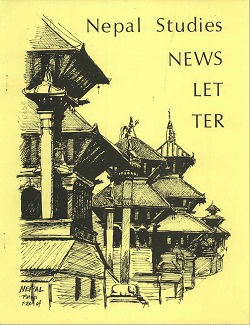Author Biography
Alton C. Byers is a mountain geographer, conservationist, and mountaineer specializing in applied research, high altitude ecosystems, climate change, and integrated conservation and development programs. He received his doctorate from the University of Colorado in 1987, focusing on landscape change, soil erosion, and vegetation dynamics in the Sagarmatha National Park. Between 1990 and 2015 he worked for The Mountain Institute in the Himalayas, Andes, and Appalachians, and in 2015 joined the Institute for Arctic and Alpine Research (INSTAAR) at the University of Colorado at Boulder as Senior Research Associate.
Elizabeth Byers is a Senior Wetland Scientist with the West Virginia Department of Environmental Protection and the principal of Appalachian Ecology, an environmental consulting firm. Ms. Byers has a B.A. (magna cum laude) in geology from Brown University, an M.S. in hydrology from New Mexico Tech, and has completed additional graduate work in ecology at Oregon State University. Ms. Byers has 30 years of experience working on natural resource projects in the Himalaya, the East African rift, the Rocky Mountains, and the Appalachians.
Daene C. McKinney is Professor of Civil Engineering at The University of Texas at Austin. Dr. McKinney’s interests include sustainable management of water resources, especially the integration of engineering, economic, environmental and political considerations in transboundary basins. His current research focuses on climate change adaptation in major river basins, impacts of climate change in glacier-dominated river basins, sharing of transboundary aquifers, the development of water management decision support systems, and the application of cooperative game theory to transboundary river basin negotiations. He is Governor (Alternate) of the World Water Council.
David R. Rounce is a postdoctoral fellow in Civil Engineering at the University of Texas at Austin. Dr. Rounce’s primary research focused on using remote sensing, field data, and computational modeling to investigate glacier melt, and the growth and hazards associated with glacial lakes. He has 5 years of experience in the Nepal Himalaya.
Abstract
Following the earthquake that occurred on April 25, 2015 in Nepal, and the second major earthquake that occurred on May 12, 2015, we conducted field-based studies of five potentially dangerous glacial lakes in Nepal— Imja Tsho, Tsho Rolpa, Dig Tsho, Panga Dinga, and Thulagi. This research was undertaken in an effort to better understand what impacts the earthquake may have had on lake stability, flood potential as well as local perceptions of the dangers that post-earthquake outburst floods pose. Although only one relatively small, earthquakerelated glacial lake outburst flood (GLOF) was found to have occurred, the presence of new cracks, slumps, shifted or displaced boulders, and landslide activity within the already deteriorating terminal and lateral moraines of the lakes suggests that they may have been further de-stabilized by the earthquake and its aftershock. Downstream communities feared the increased likelihood of aftershocks and GLOFs, and at least two downstream regions experienced panic when rumors of imminent floods started spreading. In all our visits to these downstream villages, we encountered inadequate awareness of: early flood warning systems, lake risk reduction methods, and disaster management planning. In order to eliminate the potential impacts of future glacial lake outburst floods to downstream communities, agricultural land, and infrastructure, the authors recommend the development: of standardized glacial lake risk assessment methods, Himalayan-specific lake lowering and risk reduction approaches, user friendly early warning systems, and disaster preparedness training.
Acknowledgements
The authors acknowledge the support of the National Science Foundation Dynamics of Coupled Natural and Human Systems (NSF-CNH) Program (award no. 1516912) for the support of David Rounce, Alton Byers, and Daene McKinney. In addition, the United States Agency for International Development and the American Society of Civil Engineers are acknowledged for supporting the travel and logistical costs of the work. Dhananjay Regmi of Himalayan Research Expeditions (P) Ltd. provided important logistical support during fieldwork. The Government of Nepal’s Department of Hydrology and Meteorology, the Nepal Army, and International Centre for Integrated Mountain Development (ICIMOD), Kathmandu, Nepal are thanked for their support of, and interest in, the authors’ work.
Creative Commons License

This work is licensed under a Creative Commons Attribution 4.0 License.
Recommended Citation
Byers, Alton C. III; Byers, Elizabeth A.; McKinney, Daene C.; and Rounce, David R.. 2017. A Field-based Study of Impacts of the 2015 Earthquake on Potentially Dangerous Glacial Lakes in Nepal. HIMALAYA 37(2).
Available at:
https://digitalcommons.macalester.edu/himalaya/vol37/iss2/7


